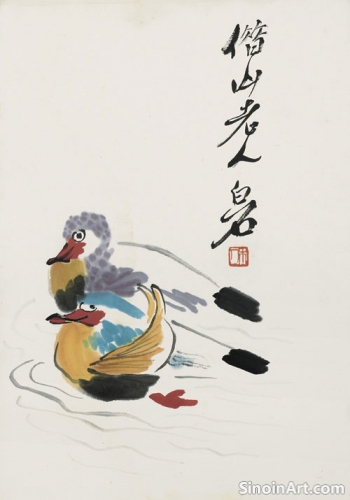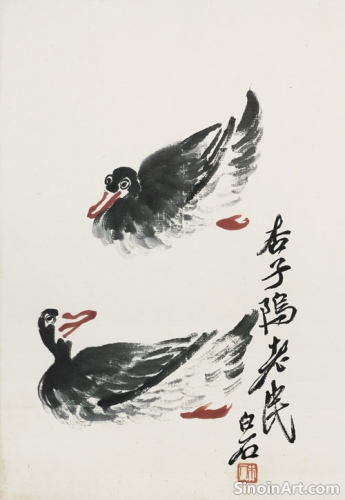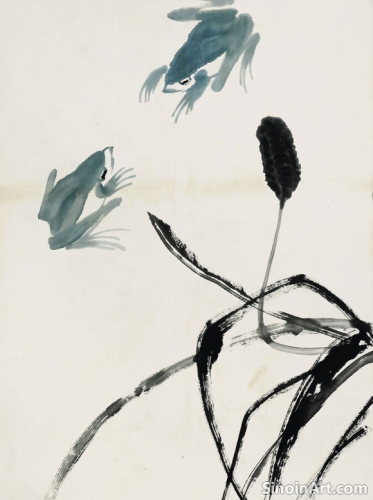The Concept of "Shu Qie" in Xieyi
|
"Shu Qie" (書契), often translated as "the written and the carved," is a concept in Chinese art that underscores the connection between calligraphy and seal carving, also having a profound impact on the practice of Xieyi painting. It emphasizes the shared qualities of line, form, and the expressive potential of these two art forms, also linking them to the greater tradition of Chinese art. It speaks to the unified nature of the expressive arts in China.  The study of both calligraphy and seal carving can deepen an artist’s understanding of brush control, line quality, and the power of the carved or written word. This understanding then informs the artist’s approach to Xieyi. Both forms require a mastery of the use of line as an expressive tool.  The techniques of calligraphy and seal carving, particularly the variations in line, the use of negative space, and the control of ink and carving tools, can all be seen in the expressive qualities of Xieyi brushwork. The underlying principles of both forms inform the aesthetic qualities of the Xieyi painting.  The application of a seal to a Xieyi painting is not just a signature but also an expression of artistic intent, often with the seal design and calligraphy acting as a miniature work of art in itself, adding an extra dimension to the artwork. The seals often contain calligraphic elements that enhance the overall quality of the painting. Understanding the connection between "the written and the carved" helps to appreciate the holistic nature of Chinese art, where the various art forms are intertwined and mutually enriching, all informing one another within the overall traditions. The understanding of this underlying connection informs a deeper understanding of the arts. |
Tag : Shu Qie, written and carved, calligraphy seals, Chinese art links, art tradition
Related information
- Xieyi Painting and the Expression of Emotion
- The Spirit of Xieyi: An Introduction to Chinese Literati Painting
- The Influence of Chan (Zen) Buddhism on Xieyi
- Xieyi Painting and the Concept of "Shu Xing"
- Xieyi vs. Gongbi: Two Paths of Chinese Painting
Xieyi painting is a powerful medium for expressing a wide range of emotions through brushstrokes, ink washes, subject matter, and the artist's state of mind, connecting with viewers on a deeply human and emotional level.
Xieyi, often translated as sketching thoughts or freehand style, is a significant genre within Chinese painting. It is characterized by its emphasis on capturing the essence and spirit of a subject rather than its exact appearance. This expressive, spontaneous approach prioritizes the artist's personal emotions and inner vision.
Chan (Zen) Buddhism profoundly influences Xieyi painting, emphasizing intuition, direct experience, mindfulness, and the concept of emptiness, aligning with the art form's focus on spontaneity, self-expression, and the pursuit of truth through art.
"Shu Xing" (calligraphic nature) is a core concept in Xieyi painting, emphasizing how the principles and techniques of calligraphy influence its brushwork, structure, and expressive qualities, reflecting the shared tools, values, and emphasis on balance, rhythm, and a sense of life force.
This article contrasts Xieyi painting with Gongbi painting, highlighting the differences in their techniques, brushwork, use of color, and overall artistic philosophies within the Chinese painting traditions.